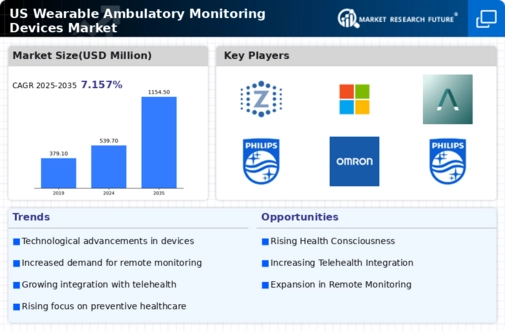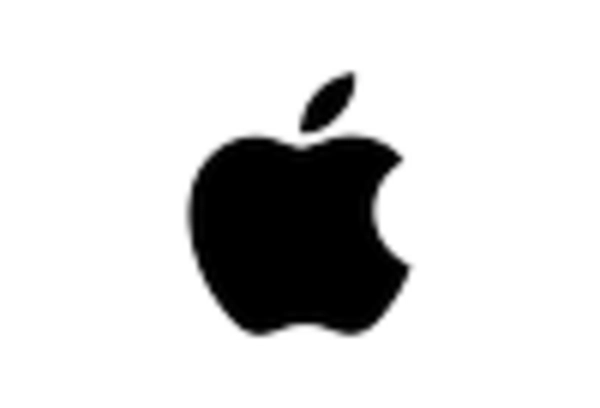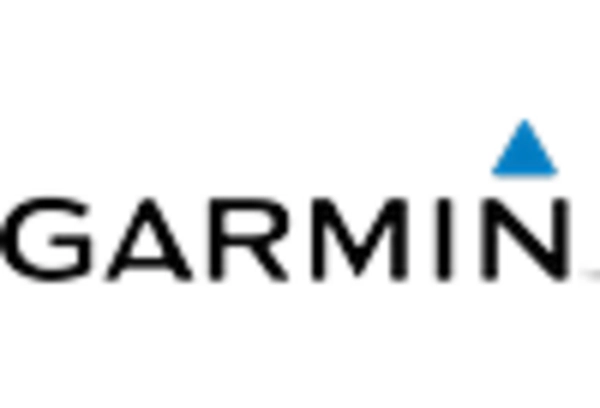The wearable ambulatory-monitoring-devices market is characterized by a dynamic competitive landscape, driven by technological advancements and an increasing consumer focus on health and wellness. Major players such as Apple Inc (US), Fitbit LLC (US), and Garmin Ltd (US) are at the forefront, each adopting distinct strategies to enhance their market positioning. Apple Inc (US) continues to innovate with its Apple Watch series, integrating advanced health monitoring features that appeal to a broad consumer base. Fitbit LLC (US), now a subsidiary of Google, emphasizes data-driven health insights, leveraging its extensive user data to refine its product offerings. Meanwhile, Garmin Ltd (US) focuses on niche markets, particularly in fitness and outdoor activities, thereby differentiating itself through specialized features tailored to specific user needs. Collectively, these strategies contribute to a competitive environment that is both innovative and responsive to consumer demands.
Key business tactics within this market include localizing manufacturing and optimizing supply chains to enhance efficiency and reduce costs. The competitive structure appears moderately fragmented, with several key players holding substantial market shares while also facing competition from emerging brands. This fragmentation allows for a diverse range of products and innovations, fostering a competitive atmosphere where established companies must continuously adapt to maintain their market positions.
In October 2025, Apple Inc (US) announced the launch of its latest Apple Watch model, which features enhanced health monitoring capabilities, including advanced sleep tracking and blood glucose monitoring. This strategic move not only reinforces Apple's commitment to health technology but also positions it to capture a larger share of the health-conscious consumer segment. The integration of these features is likely to attract new users and retain existing customers, thereby solidifying Apple's leadership in the market.
In September 2025, Fitbit LLC (US) unveiled a new subscription service that offers personalized health coaching and insights based on user data collected from its devices. This initiative reflects a shift towards a more holistic approach to health management, emphasizing the importance of personalized care. By providing tailored recommendations, Fitbit aims to enhance user engagement and loyalty, which could lead to increased subscription revenue and a stronger market presence.
In August 2025, Garmin Ltd (US) expanded its product line with the introduction of a new series of fitness trackers designed specifically for athletes. This strategic expansion into a targeted market segment allows Garmin to leverage its expertise in sports technology, potentially increasing its market share among serious fitness enthusiasts. By focusing on high-performance features, Garmin differentiates itself from competitors, appealing to a dedicated consumer base that prioritizes functionality and precision.
As of November 2025, current trends in the wearable ambulatory-monitoring-devices market include a pronounced emphasis on digitalization, sustainability, and the integration of artificial intelligence (AI) into health monitoring solutions. Strategic alliances among key players are increasingly shaping the competitive landscape, fostering innovation and enhancing product offerings. Looking ahead, it appears that competitive differentiation will evolve from traditional price-based competition to a focus on innovation, technological advancements, and supply chain reliability. Companies that prioritize these aspects are likely to thrive in an increasingly competitive environment.

















Leave a Comment